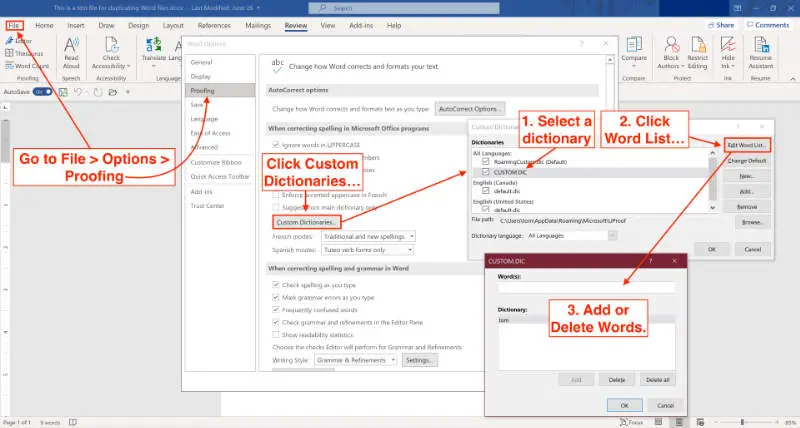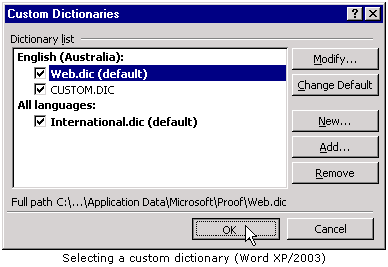

- HOW CAN I ADD A CUSTOM DICTIONARY IN WORD 2008 TRIAL
- HOW CAN I ADD A CUSTOM DICTIONARY IN WORD 2008 PASSWORD
- HOW CAN I ADD A CUSTOM DICTIONARY IN WORD 2008 FREE
HOW CAN I ADD A CUSTOM DICTIONARY IN WORD 2008 PASSWORD

To give you flexibility in what passwords are allowed, you can also define a custom banned password list. You can't edit this default global banned password list. The password change request fails if there's a match in the global banned password list. When a user or administrator tries to change or reset their credentials, the desired password is checked against the list of banned passwords. Instead, the global banned password list is based on the ongoing results of Azure AD security telemetry and analysis. The contents of the global banned password list isn't based on any external data source.

You test a password change event using this account in this tutorial. A non-administrator user with a password you know, such as testuser.An account with global administrator privileges.
HOW CAN I ADD A CUSTOM DICTIONARY IN WORD 2008 TRIAL
A working Azure AD tenant with at least an Azure AD Premium P1 or trial license enabled.To complete this tutorial, you need the following resources and privileges: Test password changes with a banned password.Add entries to the custom banned password list.Talk to experts about Microsoft Office 2019. Visit the dedicated forum to share, explore and If you have feedback for TechNet Subscriber Support, to learn more. Mark the replies as answers if they helped.
HOW CAN I ADD A CUSTOM DICTIONARY IN WORD 2008 FREE
Stored in: C:\Users\%username%\AppData\Roaming\Microsoft\Spelling\en-US\įor more information, read Add or edit words in a spell check dictionary.Īnything unclear or any updates, feel free to post back to let us know. For example, the default.dic file for United States English is Within this folder, you’ll find a subfolder representing each language that you have installed for Office. Language specific files(default.dic) are stored in the same basis location as above but the folder is called Proof (for Word/Outlook 2003 and previous) and can be found in the following location ĬUSTOM.DIC : C:\Users\%username%\AppData\Roaming\Microsoft\ Within Word/Outlook itself as it is not saved as an editable file on your computer.ĭefault.dic: Language specific dictionary files are called by default and can only be edited by opening the file in Notepad and not from within Word/Outlook.īy default the file is kept in a folder called UProof (for Word/Outlook 2007 and later) or RoamingCustom.dic: When you are using Outlook/Word and are logged in with a Microsoft Account via File-> Office Account, then this file is called and is part of your cloud based Office profile. You can edit it from within Word/Outlook or by directly opening it in Notepad. CUSTOM.DIC: The default dictionary where you store your own words in is in a file called.


 0 kommentar(er)
0 kommentar(er)
